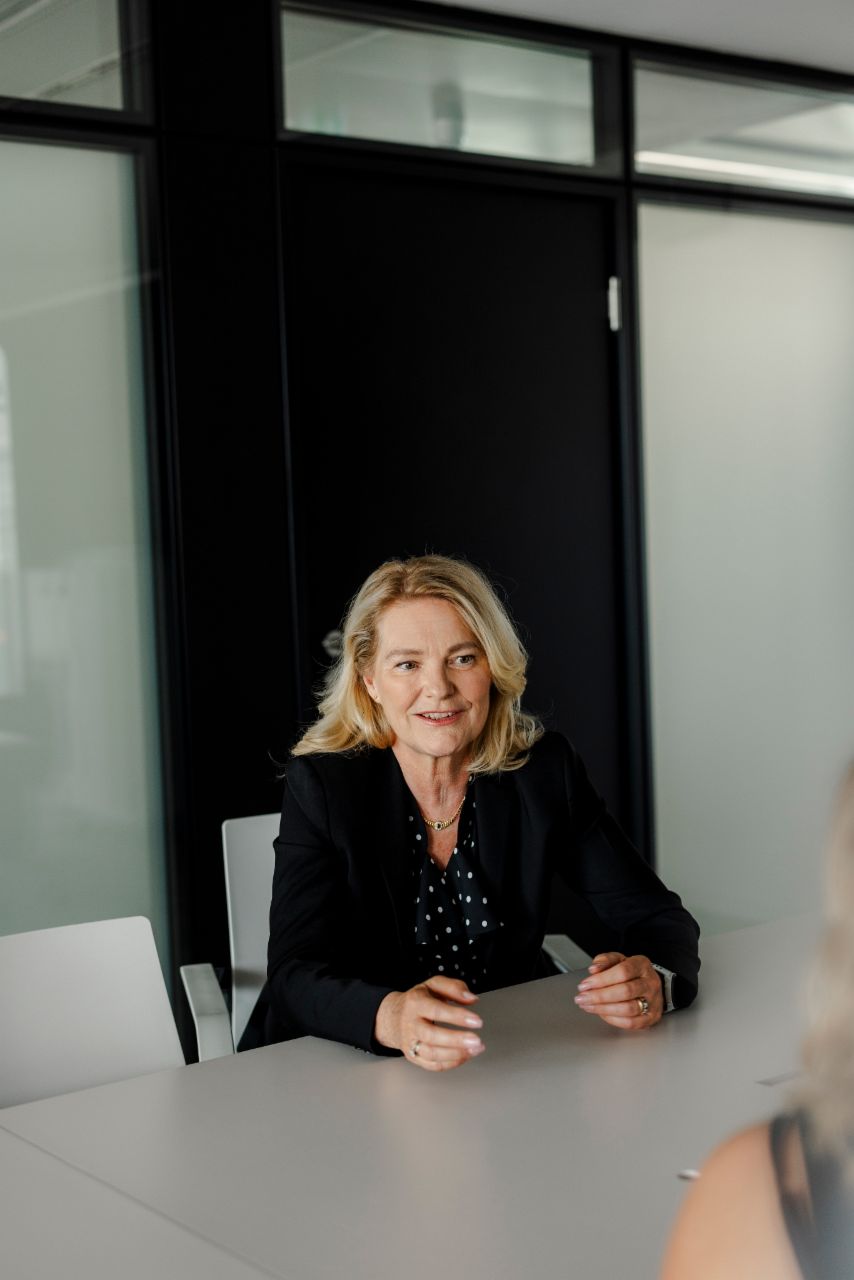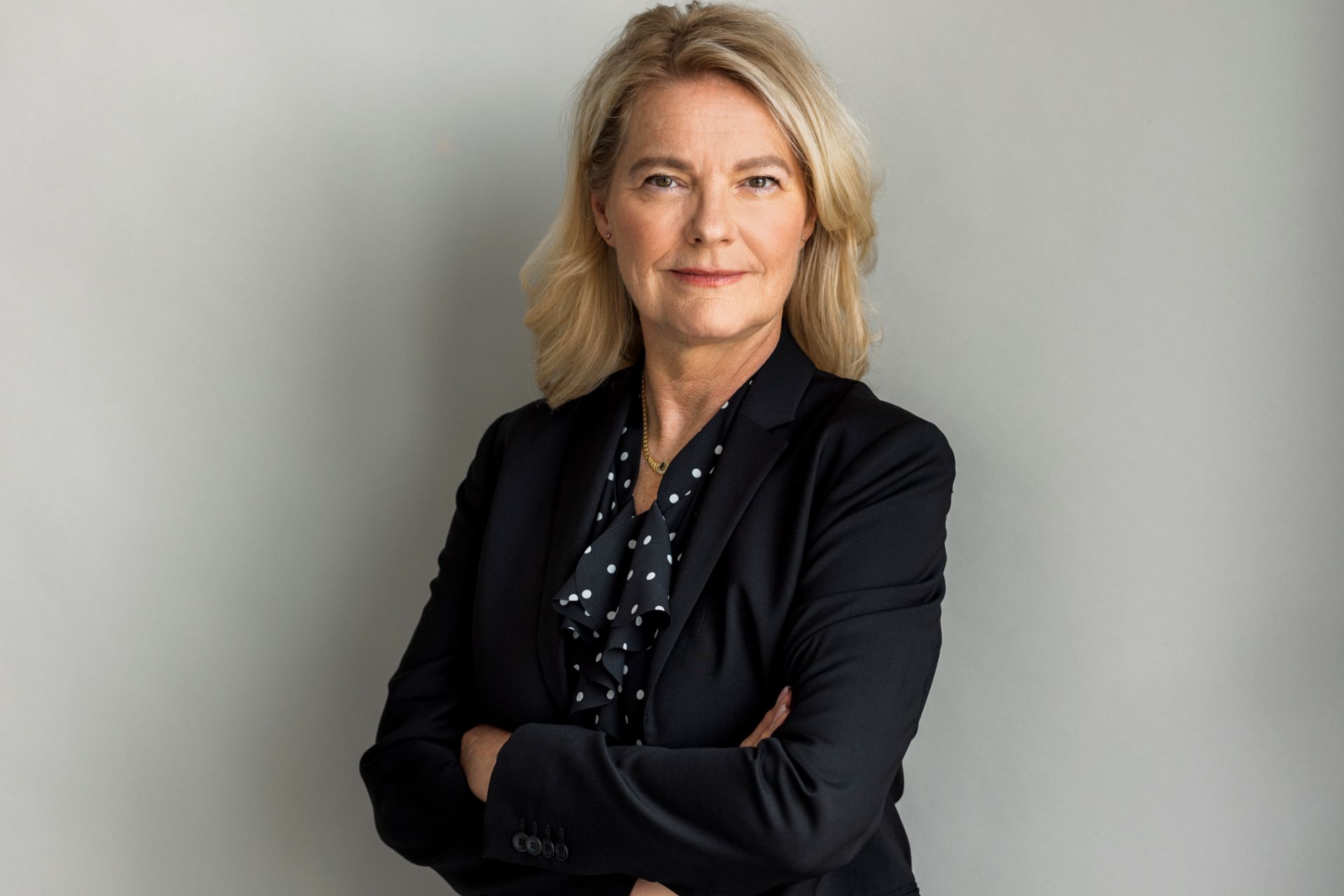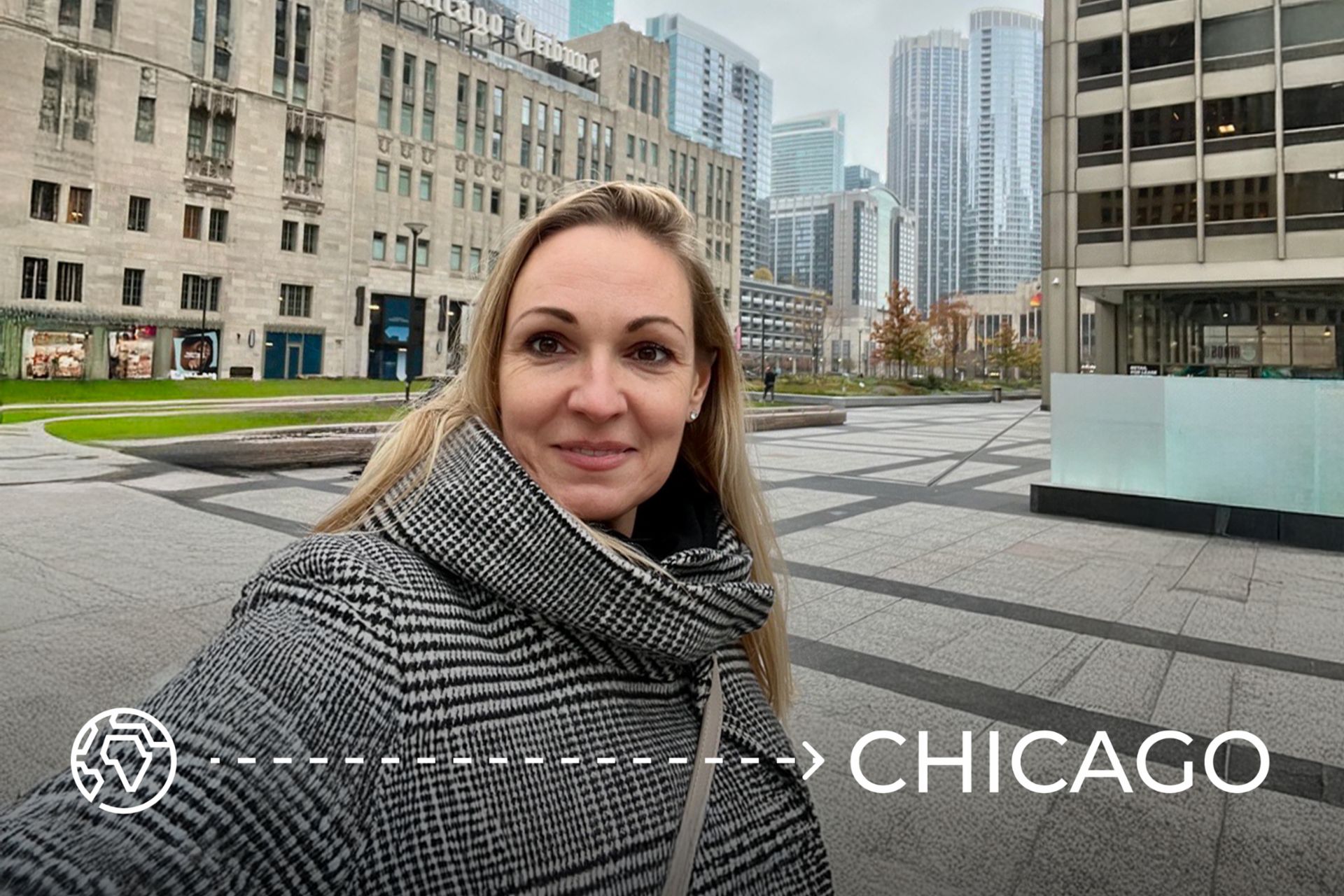Catharina, as the Head of Group Product Management, what is your approach to developing and implementing a Group-wide product strategy that aligns with TRATON’s overall business objectives?
At TRATON, our purpose is ‘Transforming Transportation Together. For a Sustainable World’. At Group Product Management, this is something we strongly adhere to. We’re not only driving TRATON and our brands forward, but also transforming the broader transportation ecosystem.
I see Group Product Management as a fusion point where Group strategy meets the needs of our brands and the capabilities of solution development. Our department defines a robust modular product portfolio with well-balanced performance steps that meet our brands' needs and solution development capabilities. We have a long-term perspective where we actively manage the needs of today with those of tomorrow.

How do you ensure effective collaboration and alignment between the product management function and other departments, such as engineering, design, sales, and marketing – as well as between the different TRATON brands?
At Group Product Management, we strive to funnel all the business and market needs from our brands and refine them through collaboration rather than a top-down approach, so that we then meet customer demands via our product road maps. Our department has five main tasks: managing the strategic portfolio; allocating buckets and budget steering; driving user factor methodology within modularization; hosting governance and defining product and service differentiation.
I believe it’s really important that stakeholders from all of our brands are represented in the Group Product Management team to ensure that we have the greatest understanding of what is possible. They also have the right connections within their organizations. We currently have representatives based in Södertälje and Munich, which works very well. In the future, I would like our team to be present on all TRATON’s development sites.
Given that TRATON is part of the Volkswagen Group, have you identified many product synergies between heavy-duty commercial vehicles and passenger cars?
The commercial vehicle industry is very different from passenger cars. We’re a vital asset for Volkswagen, and they are a firm owner for us. Surprisingly, though, the synergies on the product side between cars and heavy-duty trucks are remarkably small.
When I was working in cabin development, I wondered why we didn't take the radio or the infotainment system from VW passenger cars and put them in our trucks. However, the usage of these systems varies significantly in commercial vehicles compared to cars, and the specifications must be completely different. A car driver might turn on the radio once on their way to work, and then again on their way home – perhaps up to one hour a day. Truck drivers, on the other hand, might have the radio on all day while driving, and – because they also sleep in the truck – then also keep it on while relaxing in the evening. Passenger car radios aren’t built to withstand all-day listening, as they risk becoming too hot in the instrument panel.
Today, there’s a much bigger emphasis on software and technology compared to when you started in the industry 30 years ago. Can you highlight some of these changes?
Software and electronics are indeed much more present now than when I started in the industry 30 years ago. This isn’t just true of commercial vehicles and the transportation sector, but across society. When I started my career, most engineers within R&D departments were mechanical engineers, whereas today most of them are also educated in electronic and software engineering.
We must be aware of the threats posed by digital technology, too. Cybersecurity is becoming increasingly important in engineering. There's always someone who would like to get into a company’s software and destroy things or takes it over. We must be able to attract engineers with a strong knowledge in this field, as there is currently lack of them on the market.
"For me, it's inspiring to learn continuously. AI presents new challenges: people can create images or fictional quotes that quickly travel worldwide on social media. With such a fast flow of information, retaining a critical eye and scrutinizing sources is crucial."Catharina Modahl Nilsson, Executive Board Member & Head of Group Product Management
In what ways have you had to adapt and acquire knowledge to keep up with the transformation?
I think it's very important to be curious, to take time to examine how new technologies work and consider what opportunities they can bring. For me, it's inspiring to learn continuously. AI presents new challenges: people can create images or fictional quotes that quickly travel worldwide on social media. With such a fast flow of information, retaining a critical eye and scrutinizing sources is crucial. We must understand this technology and the market, but also figure out what is driving societal change and gauge how it affects us as a company.
What are the biggest industry developments of the previous years – and upcoming ones – that are driving product decisions?
When we decided to develop our state-of-the-art Common Base Engine that significantly reduces CO2 emissions back in 2015, we didn’t foresee the significant shift towards electrification that is underway right now. With the benefit of hindsight, we should have focused much earlier on a common solution for BEVs, too.
Now, we’re fully focused on electrifying our commercial vehicles across the Group. Both the products themselves and the charging infrastructure need to be developed. Then after this we’ll begin to see autonomous vehicles. This is all being realized due to the availability of new technologies as well as the strong push to save our planet.
How do you work together with governments and competitors to help drive innovation in the transportation sector?
New CO2 emissions legislation will soon come into play in both Europe and North America. By 2030, OEMs will be required to reduce their CO2 emissions by 45 percent in Europe. There will be a responsibility on us as truck and bus producers to deliver this. But if there’s no infrastructure and no green energy, then this won’t happen. And, as of today, there is no requirement to develop infrastructure or on the kind of energy supplied. Therefore, if we deliver our vehicles and there is no infrastructure, no green energy or no electricity along the highways, then our trucks will stand still. That’s why it’s so important that we work together.
And in my experiences on advisory boards and working with governments, there is generally a very positive atmosphere during discussions, and a willingness to change this situation. To keep up with the ever-changing transportation ecosystem and deliver this transition towards a sustainable world, it's also important that we work with our competitors – like we’re doing with the Milence joint venture. When new regulations are under discussion, it’s important that we reach agreement on what needs to be done. We're much stronger as one voice.
"Here at Group Product Management, we’re working on diversity in many ways. Our team consists of 13 nationalities, with people from four brands. We’re still striving to increase our quota of women, but it's getting better day-by-day."Catharina Modahl Nilsson, Executive Board Member & Head of Group Product Management
You also sit on the board of Chalmers University of Technology and support the Royal Swedish Academy of Engineering Sciences (IVA) with a focus on women in engineering jobs. In these roles, how are you supporting students and young women getting into this field?
When you get elected to the IVA, it’s for life. In the past, mostly men were appointed to this institution. We’re working hard to get more excellent and professional women elected to ensure greater diversity and a stronger gender mix. For me, this is really important. Much research confirms that mixed teams generate more creativity and achieve better results.
At Chalmers University, we’re always checking the percentage of women applying for Master of Science in Engineering. And we see that, in areas such as biochemistry and some civil sciences, this number is quite high – in some cases more than 50 percent. Unfortunately, this figure remains extremely low in fields such as electronics and software. We’re working very hard to improve the gender balance and achieve diversity in these areas.
Here at Group Product Management, we’re working on diversity in many ways. Our team consists of 13 nationalities, with people from four brands. We’re still striving to increase our quota of women, but it's getting better day-by-day. When I was first promoted to a managerial position at Scania, there were three female managers in the R&D department. I was the first one to become an engineering director. I’m encouraged that more women are arriving in these positions, but it's happening too slowly, and we must do more.
Finally, what leadership qualities do you believe are essential for driving a successful and cohesive Group-wide product management team?
I believe it's important to show openness, curiosity, and a willingness to work together, because if we're going to be successful, we need to collaborate. We also need to listen to each other, so that we can better understand the needs of all the different functions. I’m convinced that by following this approach, and explaining why we take decisions, we can meet the vision that we have for the future.


